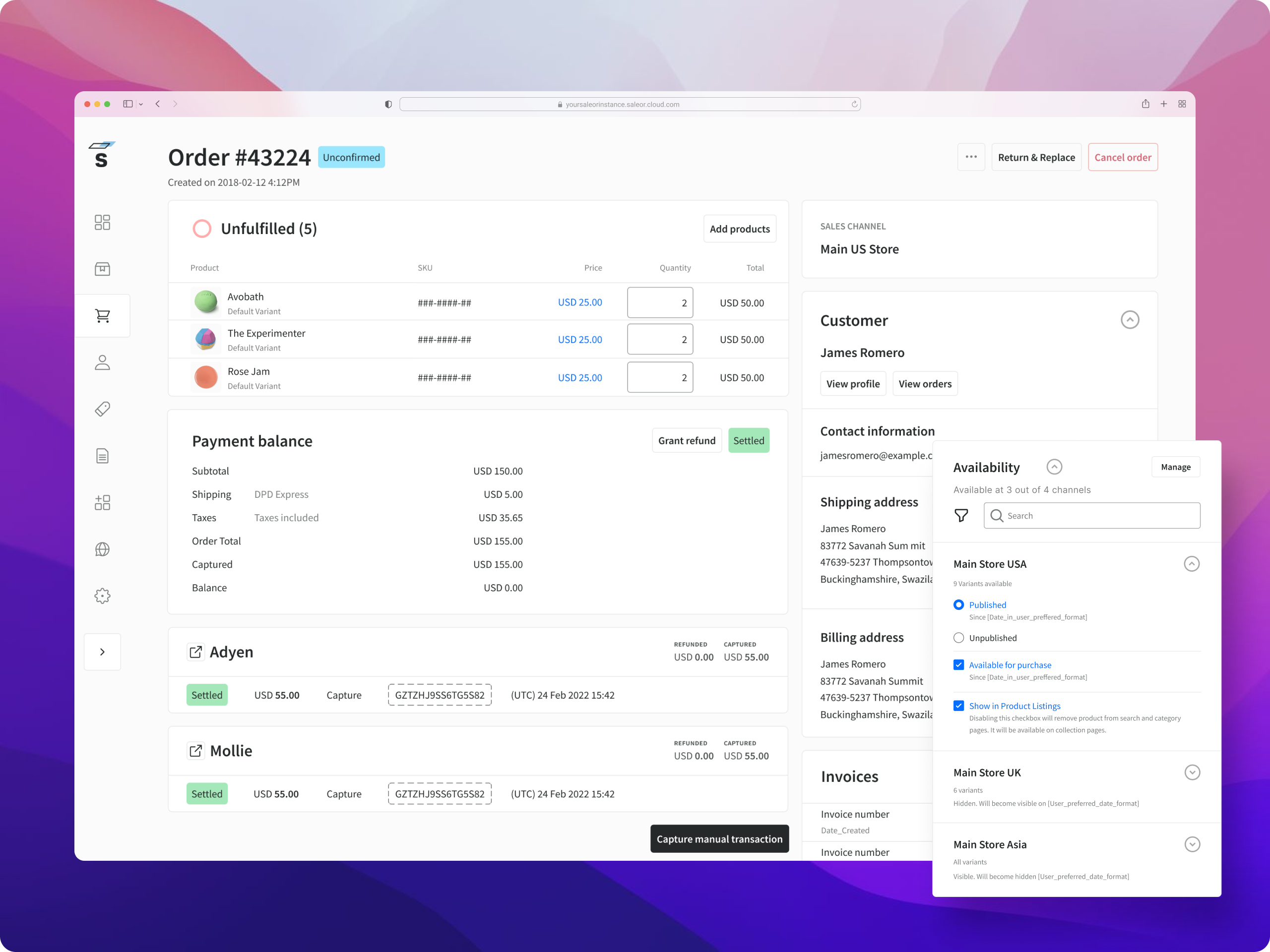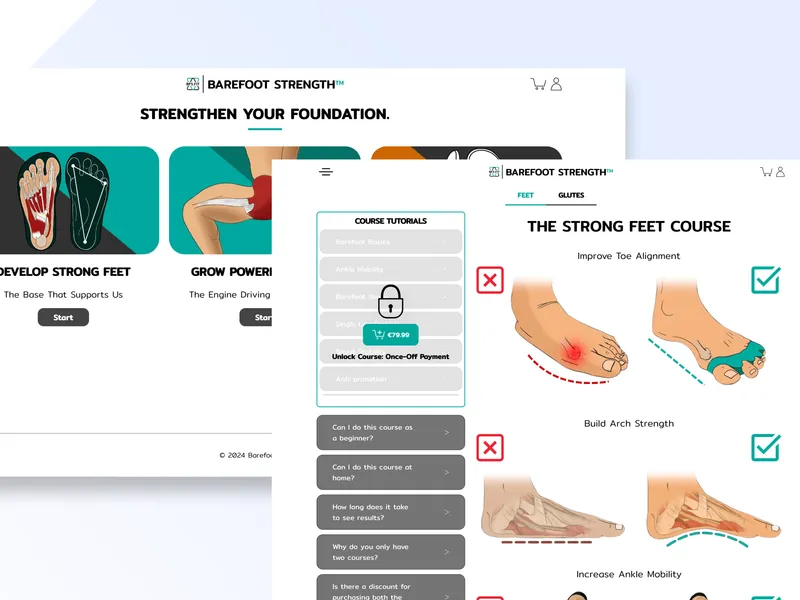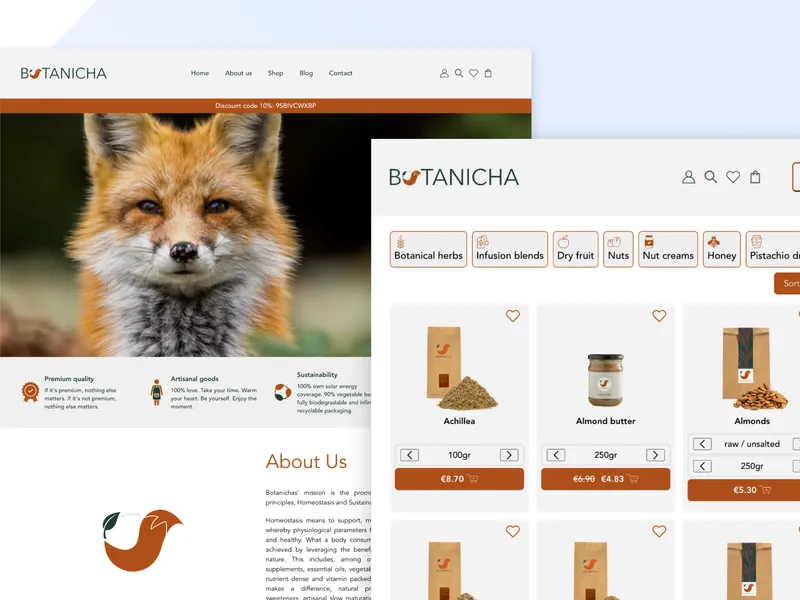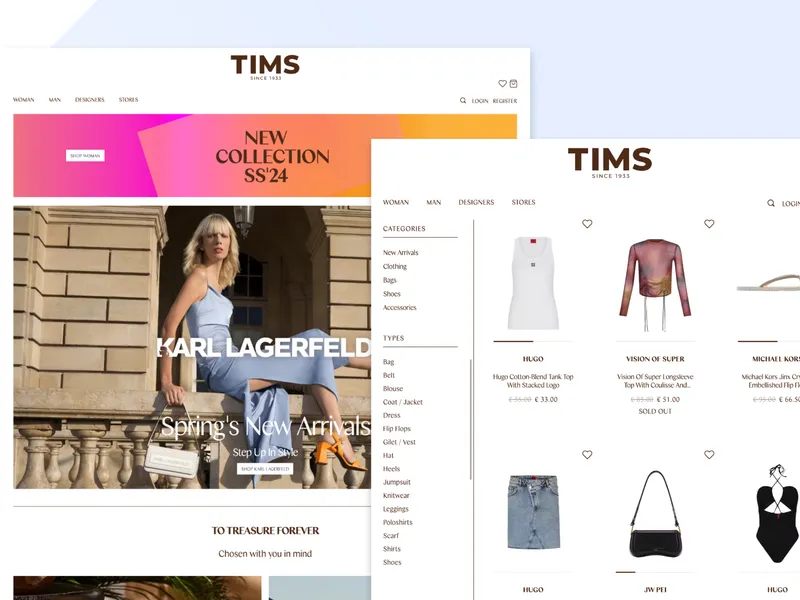Boost your Sales with Next-Gen Online Stores
We build lightning-fast, conversion-optimized e-commerce experiences using modern headless architecture.
Trusted by leading brands
What is Composable Commerce?
Think of it like building with LEGO blocks instead of buying a pre-assembled toy. You pick the best pieces for each part of your store — checkout, search, content — and connect them however you want.
All-in-One = All-or-Nothing
Everything bundled together. Want to change your checkout? Rebuild the whole store. Need a better search? Too bad, you're stuck with what you got.
- Slow, clunky websites
- Limited customization
- Expensive to scale
- Vendor lock-in
Best-of-Breed = Best Results
Pick the perfect tool for each job. Best checkout? Done. Blazing-fast search? Easy. Change anything anytime without breaking everything else.
- Lightning-fast performance
- Unlimited flexibility
- Scales with your growth
- Future-proof architecture
Compare Key Features
See how Composable Commerce stacks up against traditional platforms
Monolithic Architecture
All-in-one tightly coupled system
In a monolithic architecture, all components of your e-commerce platform are bundled together in a single application. The frontend, backend, database, and all features are tightly integrated.
Think of it like buying a complete pre-built house where everything comes together and changing one part affects the whole structure.
Composable Architecture
Modular, API-connected components
Composable architecture breaks down e-commerce into independent services connected via APIs. Each component (cart, checkout, search, etc.) can be developed, deployed, and scaled independently.
It's like building with LEGO blocks — you can add, remove, or replace individual pieces without rebuilding the entire structure.
Monolithic Flexibility
Limited by platform capabilities
With monolithic platforms, you're limited to the features and capabilities provided by your chosen vendor. Customizations often require workarounds or extensive development.
Updates and new features are released on the vendor's schedule, not yours, potentially slowing down your ability to innovate.
Composable Flexibility
Mix and match best-of-breed solutions
Composable commerce lets you select the best tools for each specific need. Need a better search experience? Just swap in a specialized search provider without changing your entire platform.
This approach enables rapid innovation and experimentation, allowing you to quickly adapt to changing market conditions and customer expectations.
Monolithic Cost Structure
Lower initial cost, higher long-term costs
Monolithic platforms typically have lower upfront costs and are easier to implement initially. However, as your business grows, costs can escalate quickly.
Scaling often requires upgrading your entire platform, even if you only need additional capacity for specific functions like checkout during holiday seasons.
Composable Cost Structure
Higher initial investment, better long-term value
Composable commerce typically requires higher initial investment in architecture and integration. However, it offers better long-term cost efficiency.
You can scale individual components as needed, paying only for the capacity you require. This approach provides better resource allocation and can significantly reduce total cost of ownership over time.
Key Benefits
Everything you need for world-class e-commerce
Performance & Speed
Blazing Fast Performance
< 1sSub-second page loads with modern frameworks.
Superior Core Web Vitals
90+Exceptional Google scores for better SEO.
Design & Experience
Complete Design Freedom
∞Unique experiences without constraints.
Powerful Navigation
SmartAdvanced filtering for product discovery.
Scale & Reach
Omnichannel Ready
AllWeb, mobile, kiosks & IoT from one backend.
Multi-Language
i18nGlobal audiences in their language.
Business Growth
Better Conversions
+40%Optimized UX for higher engagement.
Multi-Currency
150+Localized pricing & payments.
Enterprise-Ready
Integrations
Future-Proof
Tax Management
Security
Versatile Solutions for All Business Types
Headless commerce adapts to your unique business model
B2B Commerce
Streamline your B2B operations with custom catalogs, tiered pricing, and efficient ordering processes.
- Custom pricing tiers and volume discounts
- Approval workflows and purchase orders
- ERP and CRM integrations
D2C Commerce
Create engaging shopping experiences for your customers with personalized content and seamless checkouts.
- Personalized product recommendations
- Subscription and membership models
- Seamless mobile experiences
Multi-channel Commerce
Sell seamlessly across multiple platforms - from your website to marketplaces, social media, and physical stores with unified inventory and order management.
- Unified inventory across all channels
- Marketplace integrations (Amazon, eBay, etc.)
- POS and in-store pickup
Powerful Integrations
Connect with payment gateways, ERPs, and any system you need
Modern Admin Experience
See the difference for yourself
The WordPress Experience
Struggling with outdated admin panels that slow you down.
- Cluttered, confusing menus
- Slow and unresponsive interface
- Plugin conflicts & crashes
- Outdated design from 2005
Our Admin Dashboard
Manage your ecommerce store with ease using our intuitive admin interface.
- User-friendly dashboard
- Real-time inventory updates
- Seamless product catalog management
- Integrated analytics and reporting

Performance-first Technology
We use the latest technologies to build secure, lightning-fast websites that grow with your business.
Next.js
Blazing-fast React framework
Tailwind
Rapid UI development
Directus
Flexible headless CMS
Payload
Developer-first CMS
TypeScript
Type-safe code
Node.js
Scalable backend
Saleor
GraphQL e-commerce
Cloudflare
Global edge network
AWS
Enterprise cloud
Our Work
Real results for real businesses
Frequently
asked questions
What is the main difference between headless and traditional e-commerce architectures?
Traditional e-commerce uses a monolithic architecture where the frontend and backend are tightly coupled. Headless commerce separates the frontend (presentation layer) from the backend (e-commerce functionality), allowing for greater flexibility, scalability, and customization.
How does headless commerce improve the customer experience?
Headless commerce allows for faster page loads, more personalized user experiences across multiple touchpoints (web, mobile, IoT devices, etc.), and the ability to quickly update the frontend without affecting backend operations. This results in a smoother, more engaging shopping experience for customers.
Is headless commerce more expensive than traditional e-commerce?
While initial setup costs for headless commerce may be higher, it often leads to long-term cost savings through improved performance, easier maintenance, and the ability to adapt quickly to market changes without overhauling the entire system.
How does headless commerce impact site performance and SEO?
Headless commerce typically offers better performance due to reduced server load and the ability to use modern frontend technologies. This improved speed and the flexibility to implement SEO best practices more easily can lead to better search engine rankings and user engagement.
Can headless commerce integrate with my existing systems and third-party services?
Yes, headless commerce excels at integration. Its API-first approach makes it easier to connect with various systems, including CRMs, ERPs, PIMs, and third-party services for payments, shipping, etc. This flexibility allows you to create a best-of-breed solution tailored to your needs.
How does headless commerce support omnichannel strategies?
Headless commerce is ideal for omnichannel strategies as it allows you to deliver content and commerce functionality to any channel or device through APIs. This means you can easily create consistent experiences across web, mobile, social media, IoT devices, and even emerging platforms without duplicating efforts.
Is headless commerce suitable for businesses of all sizes?
While headless commerce can benefit businesses of all sizes, it's particularly advantageous for medium to large enterprises or rapidly growing businesses that need scalability, customization, and the ability to provide unique customer experiences across multiple channels.
How does headless commerce future-proof my e-commerce business?
Headless commerce provides future-proofing by allowing you to adopt new frontend technologies and expand to new sales channels without changing your core backend. This flexibility means you can quickly adapt to market trends, emerging technologies, and changing customer preferences without a complete system overhaul.
How long does it take to implement a headless e-commerce solution?
The implementation time can vary depending on the complexity of your project. However, with our expertise in Next.js and headless architectures, we can typically launch a fully functional headless e-commerce site in 8-12 weeks, with the ability to iterate and add new features rapidly after the initial launch.
Can I migrate my existing e-commerce store to a headless solution?
Yes, we specialize in migrating existing e-commerce stores to headless architectures. We can work with your current back-end systems and gradually transition your front-end to a headless solution, ensuring a smooth migration with minimal disruption to your business.
You're a perfect fit if...
You are tired of slow commerce websites
You value uttermost flexibility in your business
You are tired of complex content administration systems
You have an appetite for good User Experience (UX)
You want the snappiest e-commerce experience possible
You want to build integrations with external systems
Ready to Transform Your E-commerce?
Join forward-thinking businesses and build a faster, more flexible online store.


